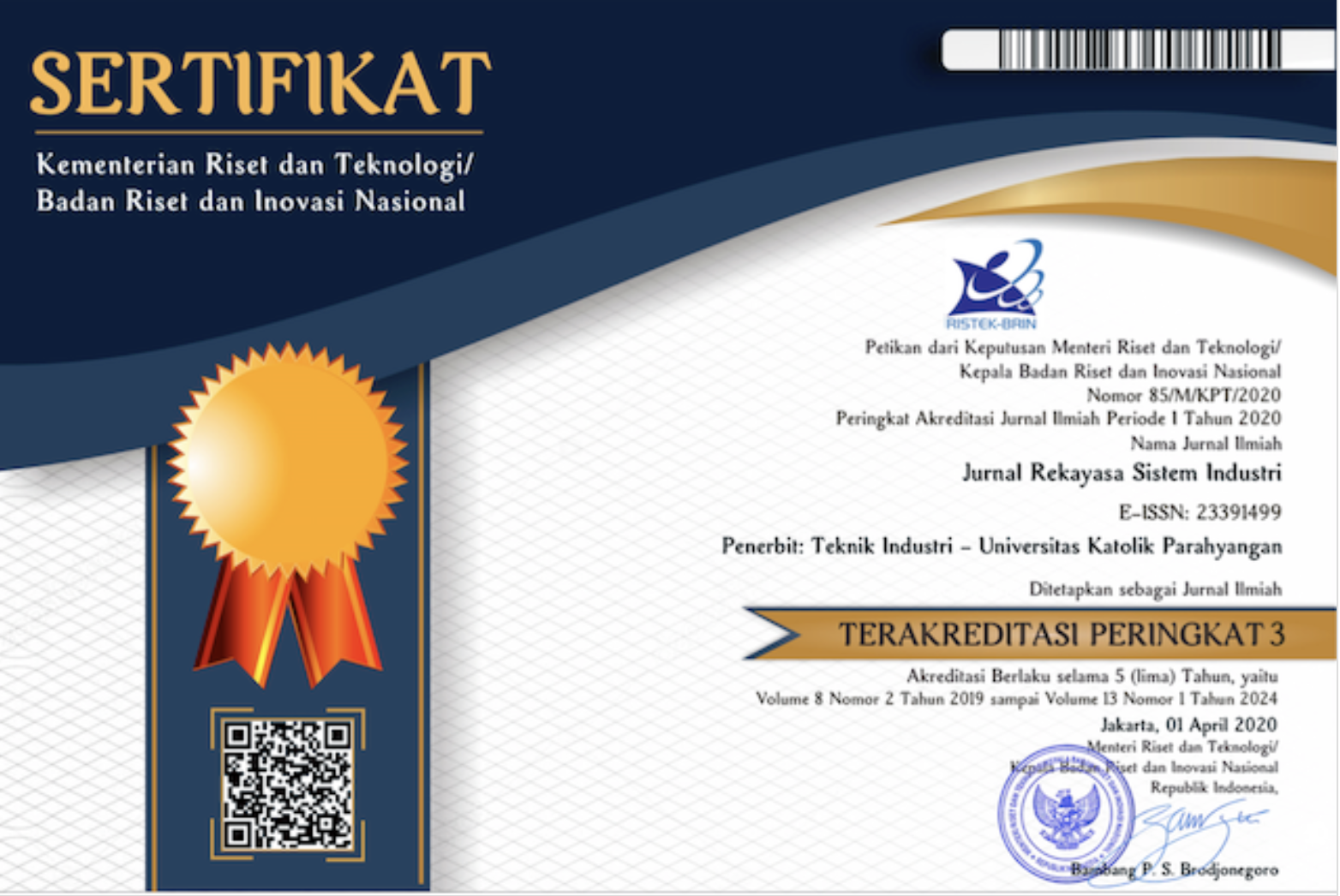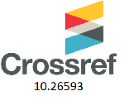Pengendalian Persediaan Produk Obat Herbal pada Permintaan Probabilistik Menggunakan Joint Economic Lot Size
DOI:
https://doi.org/10.26593/jrsi.v8i1.3252.39-46Abstract
Integration in supply chain is an important factor to consider. Good integration between entity in supply chain can give some advantages from minimize cost to competitiveness between supply chain. Company X is manufacturer of herbs medicine which has single distributor to sell the product. Currently, manufacturer and distributor have their inventory control policies and there is no coordination among echelon. It causes the difference number of production lot from manufacturer and the number of order from distributor, consequently total inventory cost become expensive.
This research will propose Joint Economic Lot Size (JELS) method that can integrate these two echelons and will give the minimum total inventory cost. The proposed JELS method is integration between Cardenas-Barron model about EPQ backorder and Ben-Daya and Hariga model about integration model between single supplier and single consumer. Calculation process begin with forecasting demand, calculation of actual inventory control at echelon manufacturer and distributor, and calculation of proposed method. The result of calculation process show that total actual inventory cost is 5.500.371,476 IDR/month and the proposed method give 4.604.766,665 IDR/month. The proposed method can give saving about 895.604,811 IDR/month or 16,28%.
Key words: cost, integration, JELS, inventory
References
Ben-Daya, M.; Hariga, M. (2004). No. 92, 75-80. Integrated Single Vendor Model with Stochastic Demand and Variable Lead Time. International Journal of Production Economics.
Cárdenas-Barron, Eduardo,L.,. (2001). 70(3): 289-292. The Economic Production Quantity (EPQ) with Shortage Derived Algebraically. International Journal of Production Economics.
Cárdenas-Barron, Eduardo, L.,. (2010). No. 59, 948-952. An Easy Method to Derive EOQ and EPQ Inventory Models with Backorders. International Journal of Computers & Mathematics with Application.
Pentico, D.W. Carl, T., Drake. M.J., (2013). No. 669486. Using a Constant Rate to Approximate a Linearly Changing Rate for EOQ and EPQ with Partial Backordering. Proceedings of the 44th Annual Meeting of the Decision Sciences Institute.
Pujawan, I. N.; Mahendrawati. (2017). Supply Chain Management (Edisi 3). Penerbit Andi.
Taft, E.W. (1918). The Most Economical Production Lot. Iron Age 101.18: 1410-1412.
Tersine, R. J. (1994). Principles of Inventory and Material Management (4th Edition), Prentice-Hall International, Inc., USA.
Smith, S.B. (1989). Computer Based-Production and Inventory Control, Prentice-Hall International, Inc., USA.













